Ghost has done it again! Following the success of Ghost Size V2, they've taken their iconic muscle-building formula to the next level with Ghost Size V3. This article has been updated to reflect those changes.
Instead of relying solely on creatine monohydrate, Ghost has always looked to enhance this tried-and-true ingredient with cutting-edge additions in their Size supplement.
Size V3: Beta Alanine out, Peak ATP in
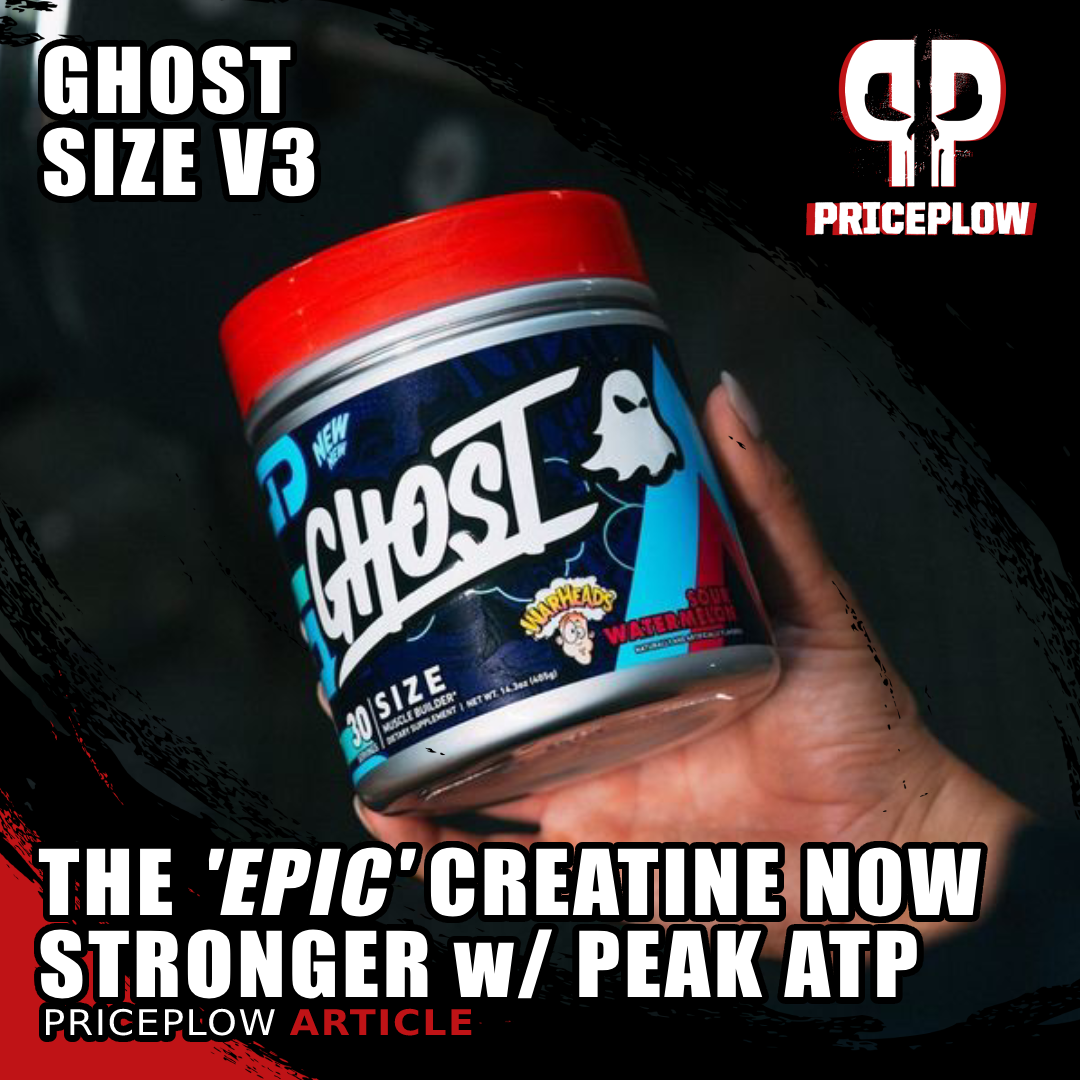
Ghost SIZE V3 is here, with a revamped formula designed for even better performance! Beta-alanine is out, and powerful additions like betaine nitrate and Peak ATP are in, offering enhanced ATP support and improved blood flow for intense workouts.
This time, they've taken customer feedback and refined it further to produce even better results. The new additions to the V3 formula are 400mg Peak ATP® and 2.5 grams of Full Yield Betaine featuring betaine nitrate. These ingredients work synergistically to boost your strength, power, and recovery, helping you achieve more in the gym than creatine could on its own.
To make room, they've removed beta-alanine from the formula. While beta-alanine can help enhance performance, especially in endurance athletes, and Ghost used a "tingle-free" version, some customers using Size V2 still had issues with tingling, and didn't want to feel that.in their non-workout situations.
Without those annoyances and designed to complement the Ghost Legend pre-workout, Ghost Size V3 fits seamlessly into your stack.
Stay with us as we break down the science behind each ingredient in Ghost Size V3, showing how this formula can help you maximize your performance and gains. But before we get to that, check our coupon-based deals and sign up for Ghost news alerts from PricePlow:
GHOST Size – Deals and Price Drop Alerts
Get Price Alerts
No spam, no scams.
Disclosure: PricePlow relies on pricing from stores with which we have a business relationship. We work hard to keep pricing current, but you may find a better offer.
Posts are sponsored in part by the retailers and/or brands listed on this page.
This area is reserved for Team PricePlow's upcoming Product Update video.
Subscribe to our channel and sign up for notifications so you catch it when it goes live!
Ghost Size V3 Ingredients
If you're familiar with Ghost, you know they're anything but ordinary. For Size, they shoot for 5g yield of creatine in their rather innovative natty muscle builder. But, there's plenty more to Size than just creatine... and they're of course bringing some insane flavor:
-
CreaPure Creatine Monohydrate - 5g
Mainly naturally found in meat, creatine is the most well-studied sports supplement ingredient out there.
It has well beyond demonstrated its ability to increase power, weight, hydration, sprint speed, lean mass, and subjective well-being while reducing fatigue. There's even some research showing slightly improved testosterone levels in men, improved bone mineral density, and better cognition in those who don't eat meat - and these benefits come with very few side effects (despite what Aunt Nancy may have heard on CNN in 1997).
Creatine's mechanism in semi-plain English
Creatine yields so many benefits because it donates a phosphate group -- which is used for cellular energy production -- to the adenosine diphosphate (ADP) molecule, and their combination is able to be turned back into adenosine triphosphate (ATP),[1-4] our cells' "energy currency".
When we're depleted of ATP, our performance and energy deteriorates. But when we have creatine to help us create more ATP, we can go longer and stronger (yielding the benefits listed above in bold) while building more lean mass than we otherwise would have. By supplementing it, your body doesn't need to generate as much,[5] and this is beneficial because creating it is a biologically costly process in the liver, pancreas, and kidneys.
With the mechanism briefly covered, let's cover the actual research areas in terms of results, since we know most Ghost fans want to see effects in the gym and in the mirror, not just in the lab.
Enough research for several meta analyses
There have been countless studies on creatine, so we'll focus most on the meta-analyses that pool them together and analyze them in their totality:
Muscle growth and preservation
Several meta-analyses come to the conclusion that men and women both young and old get moderate lean mass gains from daily creatine supplementation. The gains aren't on the order of illegal anabolic substances (like some may claim), but they are significant:
- The first meta-analysis on successful hypertrophy (muscle growth) was conducted in 2003, having already covered 100 studies.[6]
- Older adults can build muscle with it too (22 studies 721 men and women)[7] as well as an earlier review on 357 older adults.[8]On the note of the elderly, bone mineral density is incredibly important, and there's a small amount of evidence for improvements there as well, especially when combined with weight/resistance training.[9]
- Creatine supplementation also prevents sarcopenia, or muscle-wasting,[10] which is critically important to quality and quantity of life as we age.
Along with this research comes consistent weight gain -- for those who are attempting to bulk.[6]
There are several more recent studies on the matter, but the research community has known creatine has positive lean mass benefits for two decades. If you're not getting enough creatine through heavy meat eating in your diet, then it's a good idea to take it.
Increased power
There have been dozens of studies covering creatine's ability to increase power output. Of those, we have two meta-analyses that sum things up:
- A 2003 analysis of 22 studies showed that 1-, 3-, and 10-rep maxes were increased by 20% as opposed to 12% when using creatine vs. control - 8% better improvement.[11] It further showed that max number of reps increased 26% instead of 12% - 14% better than placebo![11]
- Similarly, the body composition analysis referenced above (on 100 different studies) showed improved power in isometric / isokinetic / isotonic / exercises as well as upper body lifts, but less effects for swimming and running.[6]
There's clearly something to having more ATP generation at hand -- and that leads us to the next benefit:
Improved sprinting and sprint recovery
Better sprint speed goes hand-in-hand with the ability to easily create more ATP, and it's known that recovery between races / sprint sets is better if you have better phosphocreatine regeneration.[12,13]
There's so much research on creatine that we even have a meta analysis on soccer players, where we don't see so much endurance increase, but we do see beneficial anaerobic performance effects, and it's "large and significant" when looking at Wingate tests.[14] Creatine is absolutely perfect for stop-and-go sprint sports like soccer, water polo, hockey, football, and lacrosse, all of which benefit from the ability to recover from repeated sprint bouts.
The mental aspect of creatine
Creatine and phosphate deficiency (which we believe mainly stems from not eating enough meat) is associated with deterioration of mood states.[15-17] The good news is that several studies show creatine improving general wellbeing,[18-20] so this is something to keep in mind if you haven't been eating much meat and slowly are feeling a bit run down.
It's worth noting that there could be several other deficiencies leading to negative cognitive effects (such as lack of B vitamins, EPA/DHA, essential amino acids like tryptophan and methionine, and more), so blood work and professional assistance are paramount if seeking to recover from a severe mental condition. Regardless, ensuring high enough creatine levels is often overlooked in any cognitive supplement stack, but users of Ghost Size shouldn't need to worry about that.
Testosterone?!
Above, we mentioned that creatine can promote a minor increase in testosterone in men. While the effect isn't large, it is relatively consistent, as it's been found by at least five studies that measured the critical biomarker.[21-25]
All in all, creatine may no longer be the "sexy" or "controversial" ingredient it once was, but it works and should not be ignored. Much of the research cited above is two decades old at this point - it's long been used safely.[26]
Far too often, we aren't seeing brands selling 5g worth of creatine in their overall stacks, and that's a mistake. Ghost gives you plenty of ways to get it in with Size, and one of the easiest is to take the unflavored ("Natty") version and mix it in with your Legend, Pump, Amino, or even your Whey!
-
Betaine - 2.5g
One of the big additions to the Ghost Size V3 formula is a switch to a full-yield betaine. Specifically, it's a combination of betaine anhydrous and betaine nitrate. Let's start by covering the effects of betaine anhydrous. Then, later in this section, we'll discuss how the extra addition of betaine nitrate kicks things up a notch in Size V3 for even better performance.
-
Betaine Anhydrous (1.28g delivering 1.25g Betaine)
Also known as trimethylglycine (TMG), betaine is a choline metabolite that's another well-studied muscle-building ingredient in Size. Betaine functions similarly to creatine, but has a few additional beneficial effects as well. The clinically studied dose is 2.5g, so Size is bringing you what successful gym-based research has shown.
We cover the mechanisms real quickly, and then see the real world research:
Methyl donor, homocysteine reducer
While creatine provides phosphate, betaine is a methyl donor that doubles as an osmolyte, meaning it helps regulate fluid levels across cells, keeping them more resilient[27,28] and protecting them from thermal shock.[29] As a methyl donor, betaine is able to reduce homocysteine levels,[30] which is important since homocysteine is a biomarker for several negative effects health consequences.
Added pumps to your workout
On top of the muscle-growth benefits detailed below, many users claim a better workout pump when it's taken with enough water, thanks to its osmolyte function. What most don't discuss is that there may be some nitric oxide elevation as well![31]
This means betaine makes for an incredible all-around ingredient, and we argue that if you had the choice, taking Size with your pre workout would be the most enjoyable way to use it.
If interested in the history and use of betaine to protect heart health and increase patient strength, a great review was published in 2004.[32] The research goes as far back as 1951, where doctors were calling it "the most valuable and most effective lipotropic agent tested for treatment in the human subject".[33]
Gym based studies: skipping to the increase in SIZE
It's after that 2004 review where we start getting into athletic-based studies. So with the general mechanisms covered, let's get into the actual field (gym) research, but let's skip to the important one: size gains. After that, we'll backtrack to see how we got there.
After years of successful performance-based research, a team wanted to see how betaine fared in terms of body composition. The six-week study tested 23 trained athletes (4.8 years of training experience on average) and gave them either 2.5g betaine per day or placebo.[27]
After a training program, they gained 5.3lbs lean muscle mass and lost 6.4lb fat mass, yielding a 3% reduction in body fat![27] Even better, there were significant increases in arm size,[27] which every Ghost user should love!
The same team was so impressed with the results that they dug deeper into the mechanisms, finding several hormonal pathways that are stimulated by betaine.[34]
Fat loss in females!
That same team wasn't done. The same researcher came back in 2018 with a double-blind, placebo-controlled study on college-aged women showing that betaine users lost 3.3% body fat and 2.0kg overall body weight on average, significantly more than the 1.7% bodyfat and 0.8kg body weight lost in the placebo group! These results were 2.5 times greater for weight loss and just under 50% greater body fat reduction for women using betaine.
Study subjects who received 400 mg ATP disodium for 2 weeks did significantly better on 3 sets of 50 leg extensions than the placebo group.[35] "Low peak torque" is the lowest peak torque that each group was able to create, on average, during the final 10 reps of each 50 rep set.[35]
To further back fat loss data, a 2019 systematic review of six studies with 195 participants found that betaine supplementation significantly reduced total body fat mass and body fat percentage.[36]
This research didn't come out of nowhere, of course. Researchers got to the point of testing body composition after several successful performance based studies, which are worth covering as well:
Athletic performance studies
Before the studies on muscle growth, betaine was first studied for performance and thermal protection - with new research published basically every year:
- The first athletic-based study on betaine supplementation was conducted in 2003, where runners were dehydrated and given morning exercise, then given betaine or placebos and put on a 75 minute performance run. They found that the betaine groups had lower homocysteine levels, showing attenuation from the systemic damage caused by the experiment.[37]
- In 2008, researchers testing betaine against placebo on runners found better VO2 consumption and plasma lactate in a sprint, as well as improved sprint time to exhaustion and thermal protection.[38]
- In 2009, it was shown that two weeks of betaine at 2.5g/day improved squat repetitions to fatigue and overall training volume, which can lead to more gains.[39]
- A 2010 double-blind, placebo-controlled crossover study found similar gains in force production during isometric back squat and bench press exercises.[40]
- In 2011, we again saw increased VO2 consumption, leading to a moderate increase in bench press repetitions and volume load.[41]
- 2012 brought us a study on cyclists, where betaine increased peak power (average, mean, and maximum) for all subjects combined.[42]
This brought us to 2013 and 2014, where one of the above teams finally tested body composition, with successful results![27,34]
Ultimately, betaine is a phenomenal ergogenic aid with a great story that developed this century. At 2.5g/day, we expect training volume and size benefits - but you'll have to work to achieve them.
-
Betaine Nitrate (NO3-T®) (1.95g delivering 1.25g Betaine)
While Ghost Size V3 continues to provide the benefits of betaine anhydrous, adding betaine nitrate (NO3-T®) takes things to the next level.
This compound combines betaine's muscle-building power with nitrate's nitric oxide-boosting effects. This dual-action ingredient not only helps with strength and endurance but also promotes better blood flow by enhancing nitric oxide (NO) levels.[43]
Increased nitric oxide levels cause blood vessels to widen. When you're working out, higher NO levels can lead to greater pumps and improved nutrient delivery. Additionally, while a great pump will keep you motivated and feeling good in the gym, improved blood flow and nutrient delivery may facilitate better performance and recovery.[44]
When taking Ghost Size V3 alongside the Ghost Legend pre-workout, it can work synergistically with the pre-workout's ingredients by enhancing the effects of common pump ingredients like L-citrulline, which also boosts NO levels.[44]
On top of all of that, combining betaine with nitrates has been shown to amplify exercise capacity,[45] making it a powerful addition to Ghost Size's already stacked formula.
-
-
Peak ATP® (Adenosine 5'-Triphosphate Disodium) - 400 mg
Another exciting addition to Ghost Size V3 is Peak ATP®, a patented ingredient developed by TSI Group Ltd.[46-48] Unlike other ATP-boosting options, Peak ATP delivers pure, bioavailable disodium ATP directly to your body, providing immediate benefits for strength, power, and recovery.
ATP and Muscle Performance
Adenosine triphosphate (ATP) is the body's primary energy currency that powers muscle contractions. During high-intensity exercise, your muscles deplete ATP stores quickly, and replenishing these stores is essential for maintaining top performance.
While creatine supports this process by increasing phosphocreatine stores to regenerate ATP, Peak ATP works differently. It delivers extracellular ATP, triggering a cascade of effects that enhance blood flow, nutrient delivery, and muscle energy production.
Research shows that Peak ATP supplementation increases blood flow by promoting vasodilation and enhancing oxygen and nutrient delivery to the muscles.[49] This can improve muscular endurance, increase power output, and lead to quicker recovery between sets.[35,50,51]
A study published in 2013 demonstrated that athletes who took Peak ATP experienced significant increases in total strength—147% more than training alone—and improved vertical jump power by 30%.[52]
Peak ATP® + Creatine: Synergistic Benefits
Ghost Size V3 combines Peak ATP with 5 grams of Creapure Creatine Monohydrate, creating a powerful stack that delivers complementary benefits. Creatine helps increase your body's intramuscular ATP reserves by regenerating ATP from adenosine diphosphate (ADP),[53] but it takes time to saturate muscle creatine stores if you aren't taking it already.
If you were to start taking 3-5 grams of creatine daily, most studies show that it takes about 28 days to fully saturate muscle creatine stores and start experiencing its full effects on the body.[53]
You can shorten that by going through a loading phase where you take higher doses of about 20 grams daily for about one week.[53] Still, it isn't always the easiest for everyone to take several doses of creatine each day, and it can increase the likelihood of experiencing side effects like bloating or muscle cramps.
That's why Ghost smartly decided to combine creatine with Peak ATP. This ingredient bridges that gap by immediately boosting extracellular ATP levels so you can get results from the first dose.
The combination of these two ingredients offers a dual-action approach to ATP production. Creatine helps maintain a long-term reserve of ATP for sustained performance. On the other hand, Peak ATP provides an immediate increase in blood flow and muscle activation for potential improvements in overall strength, power, and endurance.
In Ghost Size V3, you get 400mg of Peak ATP, the clinically validated dose proven to deliver results.
Along with creatine, it has synergistic effects with other ingredients in this formula, like betaine nitrate, which also helps improve blood flow. Therefore, it's clear Ghost made a terrific decision to include this ingredient in Size V3.
You can read more in two related articles on PricePlow:
-
Epicatechin 90% (200mg)
Next is the secret weapon that most of the creatine users will not have as much experience with. Thankfully, we do, and it's a powerful ingredient that we believe natural supplement users need to try:
Found prevalently in dark chocolate, (-)-epicatechin is a potent flavonol that's gained popularity for its ability to enhance lean mass gains and performance. Most notably, epicatechin has the ability to
- Enhance strength and muscle growth[54,55]
- Improve glucose tolerance[56]
- Increase endurance[57]
- Blunt fatigue[57]
- Elevate nitric oxide production[58]
Part of what makes (-)-epicatechin a prime-time muscle builder is that it's a rather powerful inhibitor of myostatin by way of increasing levels of follistatin, Myostatin's "archenemy".[55] Myostatin inhibits muscle growth, and follistatin inhibits myostatin signaling. By increasing follistatin, which ultimately results in less myostatin and more muscle growth, epicatechin deserves more attention in the sports nutrition space!
One issue is that epicatechin is pricey and has been difficult to source, so we've seen some underdosing occur over the years. Not going to happen with Ghost, whose founder Dan Lourenco originally stated over epicatechin's inclusion in Size in 2018:
"EPI has solid leading edge research of course for myostatin inhibition and muscular endurance (and a host of other more holistic health benefits). Most brands sell EPI standalone for $60+ which truly shows either how insane I am/how big of a deal GHOST Size is going to be at our price point ($39.99)! "-- Dan Lourenco
Years later, that statement is still true.
-
Senactiv (Panax notoginseng [root] & Rosa roxburghii [fruit] extracts) - 50mg
Another great element in Ghost Size is an interesting senolytic ingredient, Senactiv. Formerly known as ActiGin, this patented blend of Panax notoginseng and Rosa roxburghii root extracts is one of the most fascinating new ingredients on the market.
Out with the old, in with the new
Senactiv falls is what's known as a senolytic, which is a compound that can induce cellular death in old, deteriorating cells (known as senescent cells)[59] -- thus promoting growth and health by encouraging new cell regeneration. The process may sound scary, but it's natural, and senolytics speed it up. Senactiv is one such senolytic that actually functions in the endothelial lining of skeletal muscle cells!
NuLiv Science has conducted a lot of research on the ginsenosides inside of ginseng. In one such placebo-controlled study, they found that muscle tissue exposed to the ginseng extract used in Senactiv prior to exercise enhanced glycogen replenishment and led to fewer markers of inflammation compared to placebo.[60]
In addition to the reduction of pro-inflammatory state, the ginseng also improved time to exhaustion by 20% against control, while also boosting VO2max.[60] Mechanistically, this seems to stack very well with betaine, which works on different pathways to provide similar benefits.
Muscle biopsies also show that Senactiv's ginseng extract led to 47% more citrate synthase,[60] which is critical for ATP production - so now we're synergistic with creatine too! Further research has shown better markers in terms of lipid peroxidation, free radical damage, inflammation, and muscle damage.[60-63]
Regenerate new cells with Senactiv
By getting glycogen back into muscle tissues (2.7 times more in the same time period[60]), Senactiv can help you grow and recover faster, while clearing out useless "elderly" cells and bringing upon new growth.[61]
While speaking of new growth, Senactiv boosted a protein named Pax-7 and the MYf5 gene by 81% in one study,[64] which indicates muscular satellite cell generation.
The research is intense, so we suggest reading our in-depth article titled Senactiv from NuLiv Science: Regenerate Senescent Cells and Perform Better to learn more.
-
AstraGin (Astragalus membranaceus and Panax notoginseng) Root extracts - 50mg
Another NuLiv Science ingredient, and a keeper from the original Ghost Size formula, AstraGin is an all-natural absorption-boosting ingredient derived from different parts of Astragalus membranaceus and panax notoginseng, both staples of traditional Chinese medicine. AstraGin enhances the rate at which certain compounds and nutrients are absorbed within the intestinal wall.
Exercise can create a feeling of mental fatigue by eliciting deficits in attention and processing speed. A study published in 2023 showed that PEAK ATP® helps mitigate deficits in several cognitive tasks following exercise.[65]
NuLiv Science has conducted several research trials showing that the novel compound effectively improves uptake of creatine and beta alanine (found here in Size) as well as citrulline (found in Ghost Legend) along with amino acids, and several other compounds.[66]
How does it work? Transporter upregulation
In terms of the mechanism, the research indicates that AstraGinⓇ upregulates mRNA and its key transporters such as:[66]
- Sodium-glucose cotransport 1 (SLGT1), which controls sodium-dependent glucose uptake across cells,
- Glucose transporter type 4 (GLUT4), a key glucose transporter that helps maintain proper glucose levels,
- Cationic amino acid transporter 1 (CAT1), which moves amino acids throughout the body.[66]
In addition, AstraGin may improve gut operation as well, which supports its beneficial effects. It has been shown to reduce intestinal wall inflammation by 73% in animal models.[66] This means that we have both upregulated nutrient transport once the ingredients are in your bloodstream and AstraGin helps them get there more effectively as well.
Size contains the full research-backed 50mg dose of AstraGin to increase the effectiveness of all its ergogenics even further, and may even help enhance your pre workout as well!
Becoming a Legend
Dan had a few other tidbits about Ghost Size and specifically in regards to the brand's pre workout, Legend, that we felt would behoove our readers to see:
"Last, unlike our pre-workout where we recommend 1-2 scoops to give users easy flexibility to flavor their stimulant and other doses, GHOST Size is a 1 scoop, fully clinical, packed to the nines, no cost spared muscle builder. It's launching in a neutral, natural flavor and contains no artificial sweeteners or colors. Get ready to make some gains, Legends!"--Dan Lourenco
Flavors Available

Sign up for alerts on our Ghost news page so you don't miss any news!
Ghost Size V3 doesn't just bring the gains. It also brings the flavor! At launch, Ghost will have three distinct flavor options available.
Whether you're a fan of the classic "Natty" (unflavored, so you can stack it with anything) or craving something with a kick, you're in for a treat.
For those who love a refreshing twist, there's the zesty "Cherry Limeade" option. And if you want a fun, sour burst, the GHOST® x WARHEADS® "Sour Watermelon" collab will be right up your alley.
Here's the updated list of flavors in stock:
Ghost Size V3 is a Legendary Upgrade to Creatine
With the new formula for Ghost Size V3, Ghost is changing the game once again. After a thorough review, we believe they made many smart choices with this formula.
First, they showed they're willing to listen to customers' feedback by removing beta-alanine so you no longer get that annoying itching and tingling feeling.
Plus, you have the powerful additions of a full-yield betaine featuring betaine nitrate and Peak ATP to step things up a notch. These ingredients go beyond standard creatine, providing immediate ATP support and improved blood flow to fuel intense workouts and faster recovery.
Finally, to top things off, the formula still has the great bones that made it a success before. That includes 5 grams of Creapure Creatine Monohydrate and promising ingredients like Epicatechin and Senactiv, which are still in the mix.
So, what are you waiting for? Ghost Size V3 is here, and it's time to get after it! We encourage you to try it and see how it can help you reach your training goals.
GHOST Size – Deals and Price Drop Alerts
Get Price Alerts
No spam, no scams.
Disclosure: PricePlow relies on pricing from stores with which we have a business relationship. We work hard to keep pricing current, but you may find a better offer.
Posts are sponsored in part by the retailers and/or brands listed on this page.
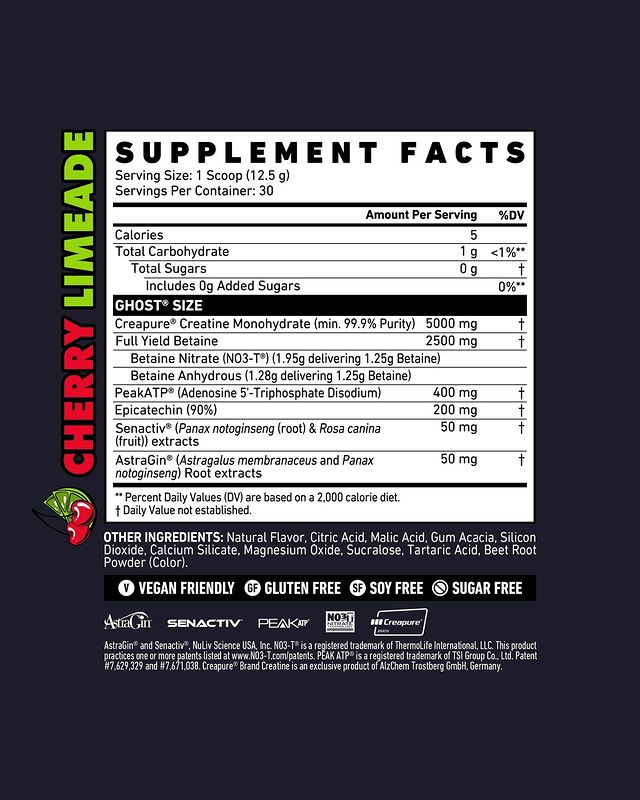
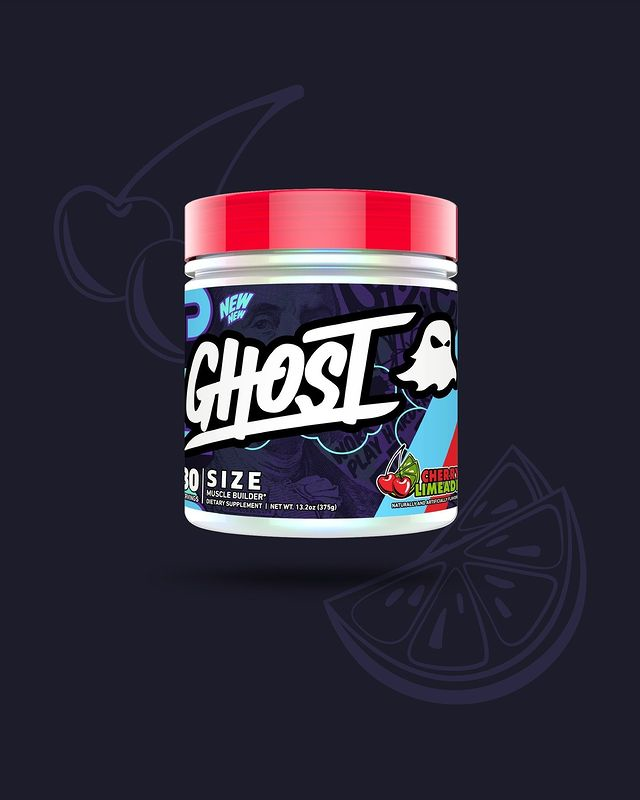
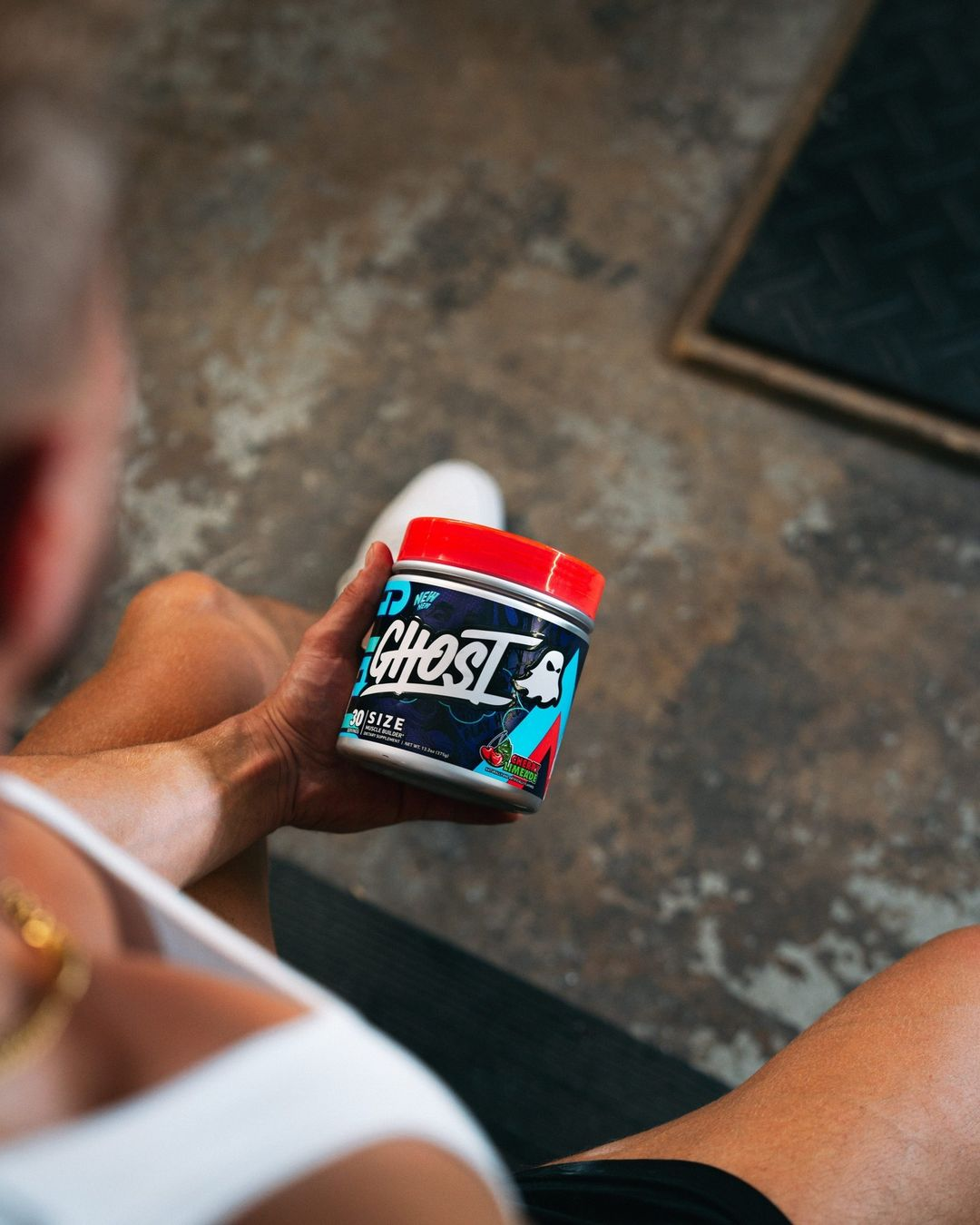

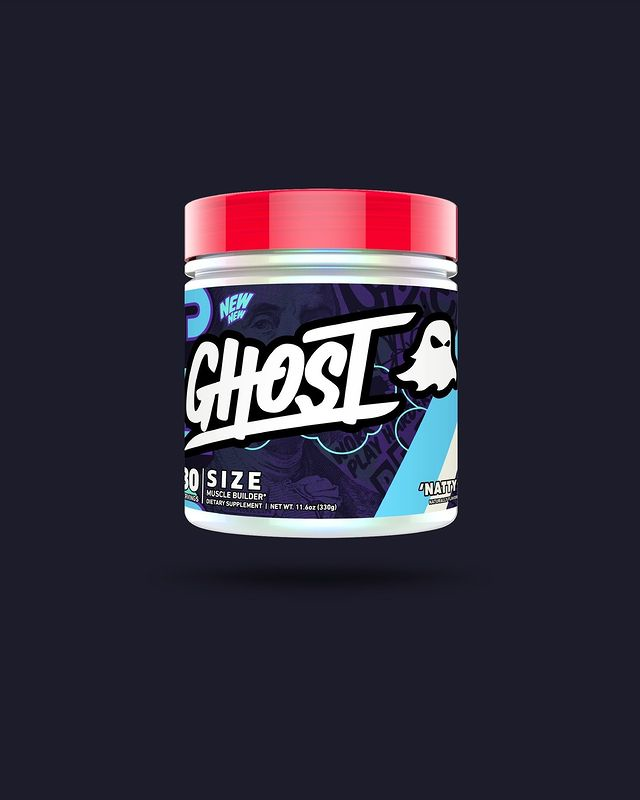
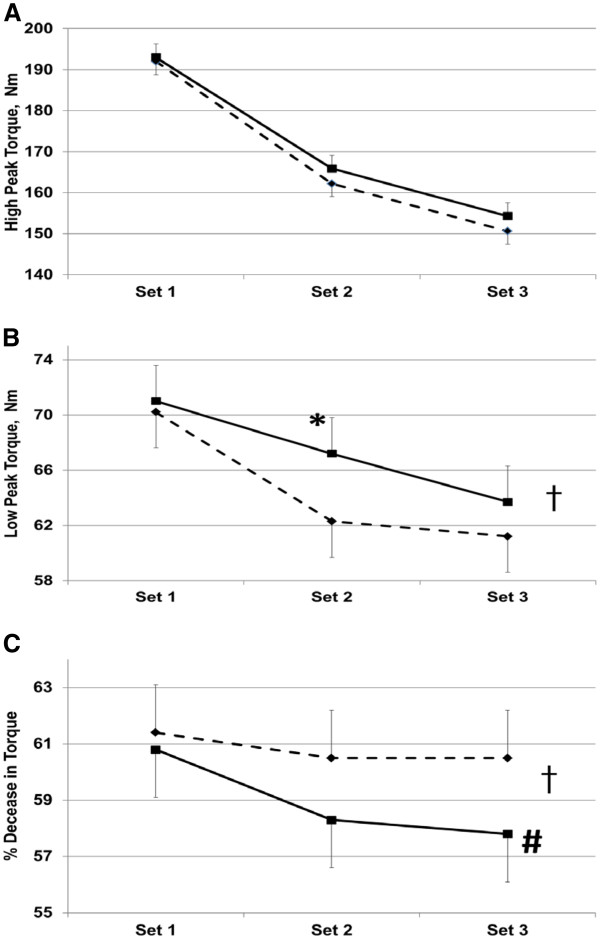
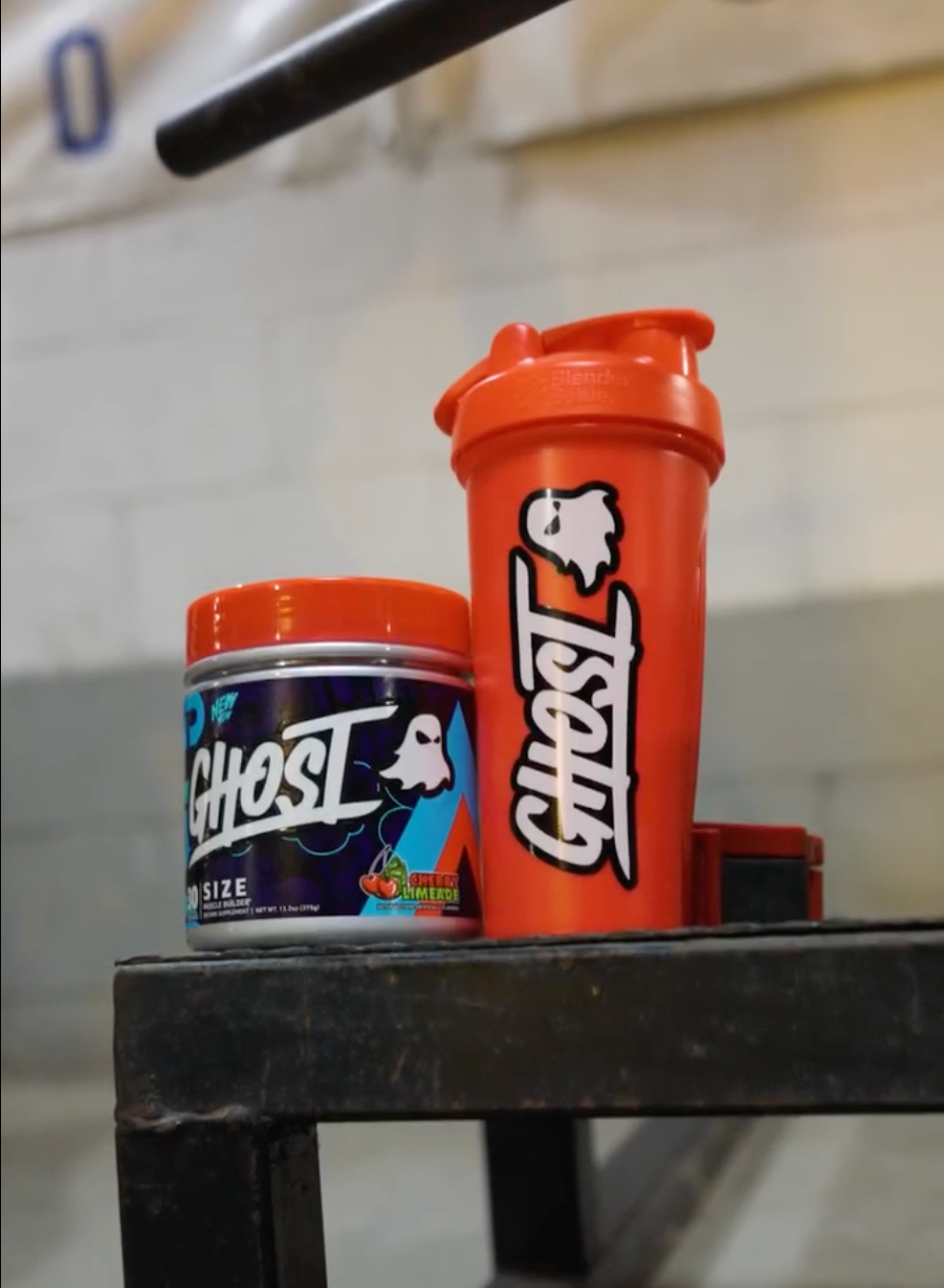
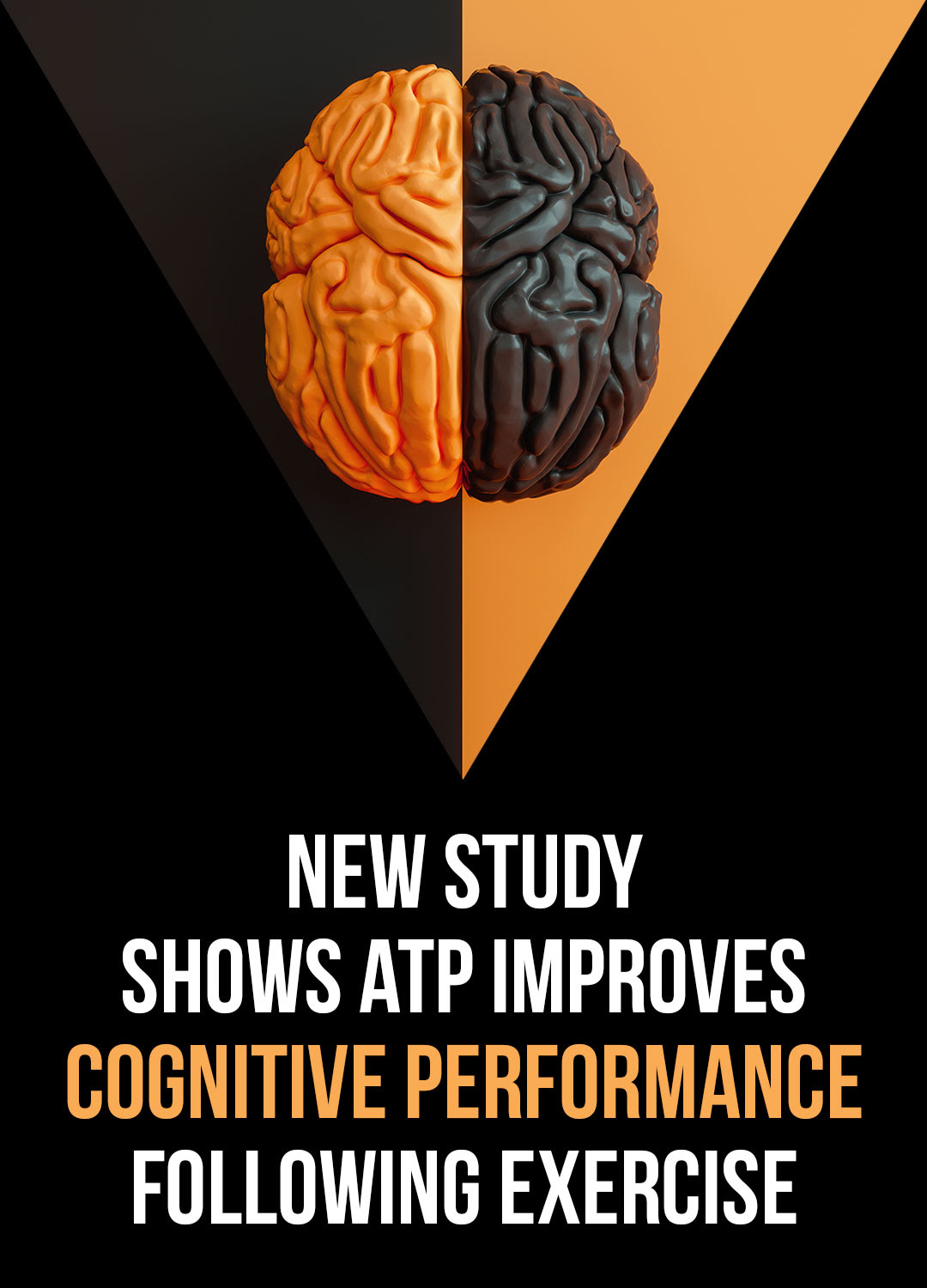
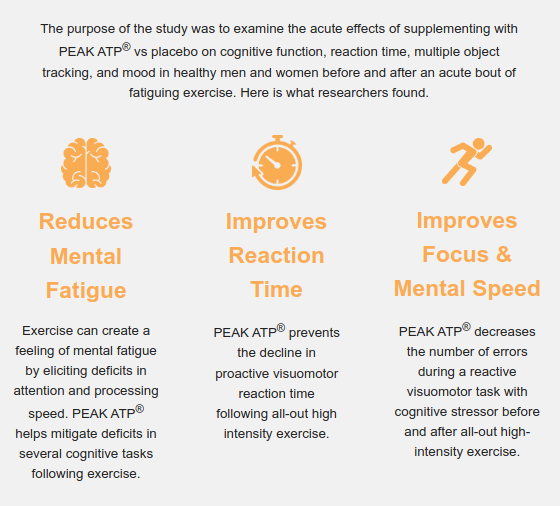

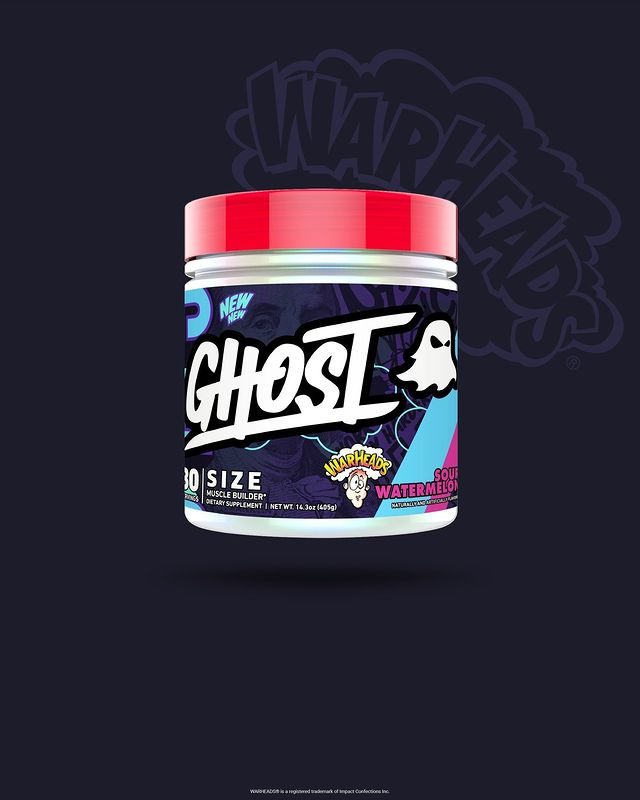
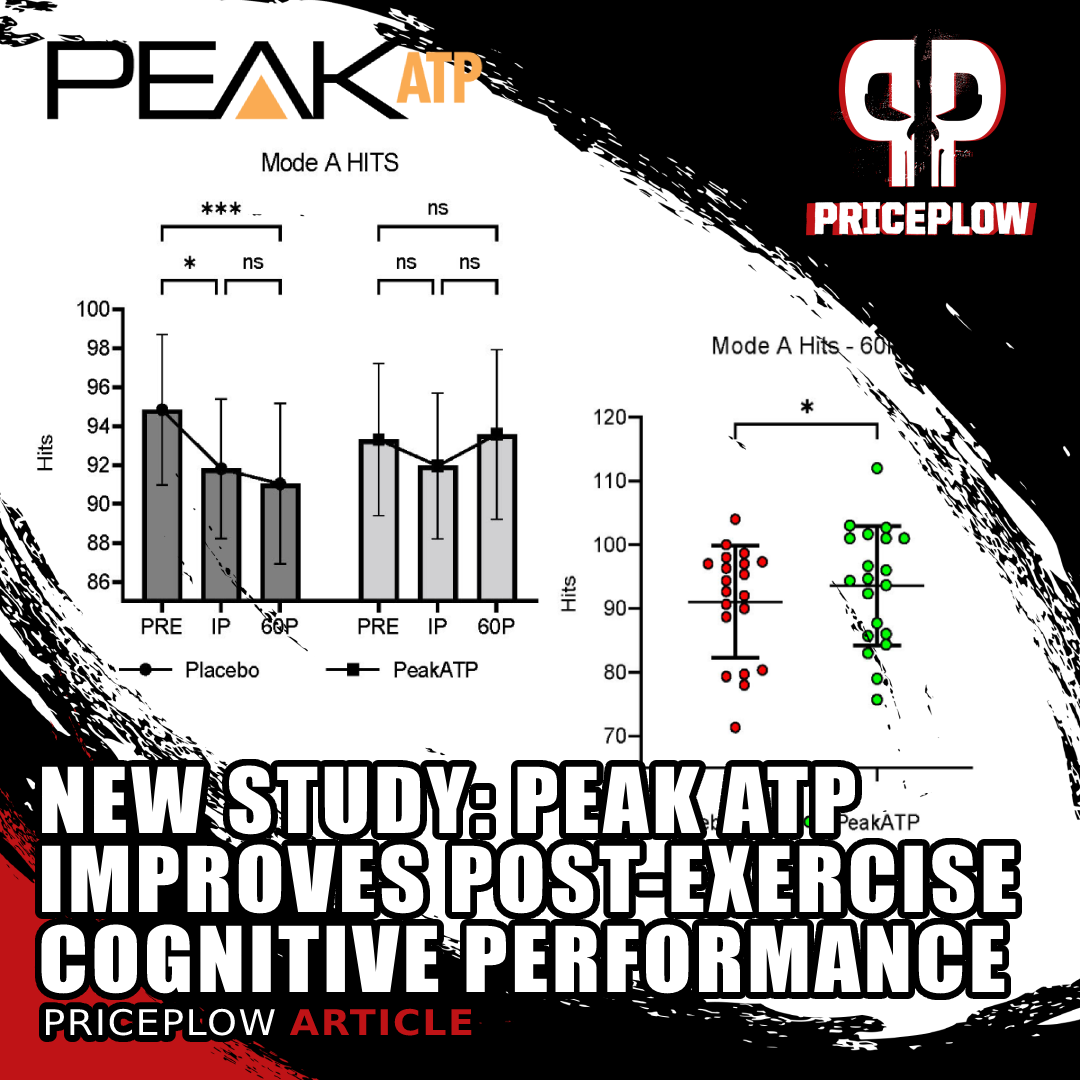



Comments and Discussion (Powered by the PricePlow Forum)